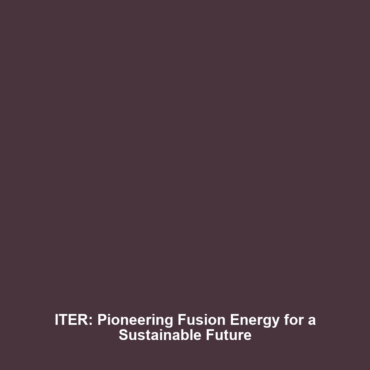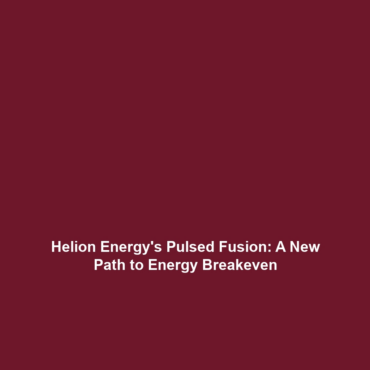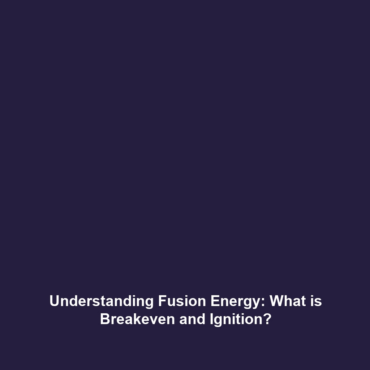ITER (International Thermonuclear Experimental Reactor) – A Breakthrough in Fusion Energy
Introduction
ITER (International Thermonuclear Experimental Reactor) represents a pivotal step towards harnessing the power of fusion energy, the same process that fuels the sun. As humanity seeks sustainable and clean energy sources, ITER stands out as a global collaboration involving 35 countries. This ambitious project aims to demonstrate the feasibility of nuclear fusion as a large-scale and carbon-free energy alternative. By efficiently replicating the sun’s energy production, ITER could revolutionize the world’s approach to energy generation, making it essential in the fusion energy landscape.
Key Concepts of ITER
Principle of Nuclear Fusion
At its core, ITER is designed to study nuclear fusion, where light atomic nuclei combine to form heavier nuclei, releasing substantial energy in the process. The primary fuel for ITER consists of deuterium and tritium, both isotopes of hydrogen, which have the potential to produce large amounts of energy with minimal environmental impact.
Tokamak Design
The ITER reactor employs a tokamak design, a magnetic confinement system that uses powerful magnetic fields to contain hot plasma (ionized gas) necessary for fusion. This innovative approach allows researchers to achieve the high temperatures and pressures required for sustainable fusion reactions.
Applications and Real-World Uses
The applications of ITER within the realm of fusion energy are vast and could significantly impact energy production globally. Some key applications include:
- Clean Energy Generation: If successful, ITER could lead to the development of fusion power plants that provide baseload electricity with minimal environmental footprints.
- Research Advancement: The technology and findings from ITER will contribute to advancements in medical and industrial applications, particularly those using neutron activation.
- Grid Stability: Fusion energy could play a crucial role in providing stable and reliable power, complementing renewable energy sources like solar and wind.
Current Challenges
Despite its promise, there are several challenges faced in the study and application of ITER:
- Technical Complexities: Building and operating a fusion reactor involves sophisticated technologies and engineering challenges.
- Funding Requirements: The project demands substantial financial investments and international cooperation to maintain progress.
- Public Perception: Achieving public and political support for fusion energy initiatives can be difficult due to misconceptions about nuclear technologies.
Future Research and Innovations
The future of ITER is poised for groundbreaking innovations. Ongoing research focuses on:
- Advancements in Plasma Physics: Improvements in understanding plasma behavior under extreme conditions can enhance reactor efficiency.
- Next-Generation Technologies: Development of alternative fusion systems, such as stellarators and inertial confinement, is underway to complement the tokamak design.
Conclusion
In summary, the ITER (International Thermonuclear Experimental Reactor) project epitomizes hope for the future of fusion energy. Its innovative design, ambitious research goals, and potential real-world applications mark it as a cornerstone in the quest for clean and sustainable energy. Continued support and research are vital for realizing the full potential of fusion energy systems. For more information about fusion technologies, consider exploring our overview of fusion technologies or check out recent innovations in fusion energy.









